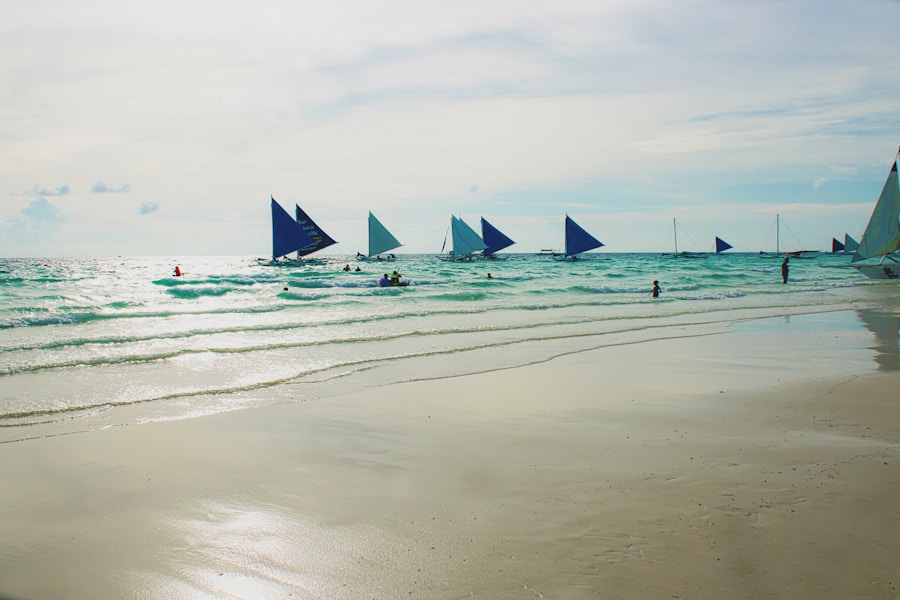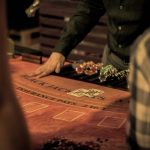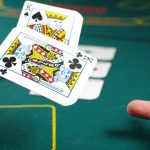Download links
How to install Rediscovering Paradise: Boracay's Irresistible Charm APK?
1. Tap the downloaded Rediscovering Paradise: Boracay's Irresistible Charm APK file.
2. Touch install.
3. Follow the steps on the screen.
Description
Boracay, a small island in the Philippines, has a rich and varied history that dates back centuries. Originally inhabited by the Ati people, an indigenous group known for their vibrant culture and deep connection to the land, Boracay was a tranquil paradise long before it became a global tourist destination. The island’s name is believed to have originated from the local word “borac,” which means “white cotton,” a reference to the fine white sand that characterizes its beaches.
The Ati people lived sustainably, relying on fishing and farming, and their traditions and practices shaped the early identity of Boracay. The arrival of Spanish colonizers in the 16th century marked a significant turning point in Boracay’s history. The island was largely overlooked during the colonial period, as the Spanish focused on larger islands like Luzon and Mindanao.
However, it began to gain attention in the late 20th century when travelers discovered its pristine beaches and crystal-clear waters.
This burgeoning interest laid the groundwork for what would become one of the most famous beach destinations in the world.
Key Takeaways
- Boracay was once a quiet and undeveloped island, known only to locals and a few intrepid travelers, before it became a popular tourist destination in the 1970s.
- The transformation of Boracay from a pristine paradise to a bustling tourist hotspot led to issues such as overcrowding, pollution, and environmental degradation.
- The allure of Boracay’s beaches lies in their powdery white sand, crystal-clear waters, and stunning sunsets, making it a top destination for beach lovers and water sports enthusiasts.
- The unique culture and traditions of Boracay are influenced by the Ati people, who are the island’s indigenous inhabitants, and are celebrated through colorful festivals and traditional practices.
- Ecological conservation efforts in Boracay include the rehabilitation of the island’s natural resources, strict environmental regulations, and sustainable tourism practices to preserve its beauty for future generations.
- The future of Boracay as a sustainable tourism destination depends on the continued commitment to conservation, responsible tourism, and the preservation of its natural and cultural heritage.
The Transformation of Boracay
The Rise of Boracay as a Premier Tourist Destination
By the early 2000s, Boracay had firmly established itself as a premier destination for both local and international tourists. The island’s reputation was bolstered by accolades from travel publications and websites, which praised its stunning beaches and vibrant nightlife.
The Dark Side of Tourism: Environmental Degradation and Overpopulation
However, this popularity came at a cost. The influx of tourists strained local resources, leading to issues such as waste management problems and habitat destruction. The island’s natural beauty was threatened by the rapid growth of tourism.
Preserving Boracay’s Natural Beauty: Government Initiatives and Regulations
In response to these challenges, the Philippine government initiated various measures aimed at regulating tourism and preserving the island’s natural beauty. These efforts sought to strike a balance between promoting tourism and protecting the environment, ensuring a sustainable future for Boracay.
The Allure of Boracay’s Beaches

The allure of Boracay’s beaches is undeniable, drawing millions of visitors each year who seek sun-soaked relaxation and adventure. White Beach, often regarded as the crown jewel of Boracay, stretches for over four kilometers and is renowned for its powdery white sand and turquoise waters. This beach is not only a picturesque setting for sunbathing but also serves as a hub for various water sports, including parasailing, windsurfing, and snorkeling.
The vibrant atmosphere along White Beach is complemented by an array of beachfront bars and restaurants that come alive as the sun sets. Beyond White Beach, Boracay boasts several other stunning beaches that cater to different preferences. Puka Shell Beach, located on the northern part of the island, offers a more tranquil experience with its less crowded shores and unique puka shells scattered along the sand.
This beach is ideal for those seeking solitude or a romantic getaway. On the other hand, Bulabog Beach is famous for its strong winds and waves, making it a hotspot for kiteboarding enthusiasts. Each beach on Boracay presents its own unique charm, ensuring that visitors can find their perfect slice of paradise.
The Unique Culture and Traditions of Boracay
| Aspect | Description |
|---|---|
| Local Festivals | Boracay hosts various festivals such as Ati-Atihan, Boracay International Dragon Boat Festival, and Paraw Regatta. |
| Local Cuisine | Boracay offers a variety of local dishes such as lechon, seafood, and traditional Filipino desserts. |
| Arts and Crafts | The island is known for its vibrant arts and crafts scene, with local artisans creating handmade products such as jewelry, clothing, and accessories. |
| Traditional Dances | Boracay showcases traditional Filipino dances such as the Tinikling and the Itik-Itik, often performed during cultural events and celebrations. |
| Local Beliefs and Superstitions | The island has its own set of local beliefs and superstitions, which are often reflected in the daily lives and practices of the community. |
Boracay’s culture is a vibrant tapestry woven from its indigenous roots and influences from various cultures that have passed through the island over the centuries. The Ati people continue to play an essential role in preserving the island’s cultural heritage through traditional practices such as dance, music, and crafts. Festivals like Ati-Atihan celebrate their history and showcase their colorful attire and lively performances, drawing both locals and tourists into the heart of Boracay’s cultural identity.
In addition to indigenous traditions, Boracay has embraced influences from other cultures due to its diverse population. The island is home to a mix of Filipinos from different regions as well as expatriates from around the world. This melting pot has led to a unique culinary scene that reflects both local flavors and international cuisines.
Visitors can indulge in traditional Filipino dishes like adobo and sinigang while also enjoying global fare ranging from Italian pasta to Japanese sushi. This cultural fusion enriches the experience of those who visit Boracay, allowing them to engage with both its history and contemporary lifestyle.
The Ecological Conservation Efforts in Boracay
As tourism flourished in Boracay, so did concerns about environmental sustainability. The rapid development of infrastructure and increased visitor numbers led to significant ecological challenges, prompting local authorities to take action. In 2018, Philippine President Rodrigo Duterte ordered a six-month closure of Boracay to address these issues comprehensively.
This unprecedented move aimed to rehabilitate the island’s ecosystems by implementing stricter regulations on waste management, sewage treatment, and construction practices. During this closure period, extensive efforts were made to restore Boracay’s natural beauty. Local government units collaborated with environmental organizations to clean up beaches, replant mangroves, and establish marine protected areas.
These initiatives not only aimed to restore the island’s ecosystems but also sought to educate both residents and tourists about sustainable practices. The reopening of Boracay in October 2018 marked a new chapter in its history, with a renewed focus on balancing tourism with ecological preservation.
The Future of Boracay as a Sustainable Tourism Destination

Looking ahead, Boracay stands at a crossroads where it must navigate the delicate balance between tourism growth and environmental sustainability. The island’s government has implemented measures such as limiting tourist capacity and promoting eco-friendly accommodations to ensure that future visitors can enjoy its beauty without compromising its integrity. These initiatives are designed not only to protect Boracay’s natural resources but also to enhance the overall visitor experience by fostering a sense of responsibility among tourists.
Moreover, community involvement is crucial for Boracay’s sustainable future. Local residents are increasingly engaged in conservation efforts and are encouraged to participate in decision-making processes regarding tourism development. By empowering communities to take an active role in preserving their environment while benefiting economically from tourism, Boracay can create a model for sustainable tourism that other destinations may aspire to emulate.
As travelers become more conscious of their environmental impact, Boracay’s commitment to sustainability may serve as a beacon for responsible tourism practices worldwide. In conclusion, Boracay’s journey from an untouched paradise to a bustling tourist destination has been marked by both triumphs and challenges. Its stunning beaches continue to captivate visitors while its unique culture enriches their experiences.
As conservation efforts take center stage in shaping its future, Boracay has the potential to redefine what it means to be a sustainable tourism destination in an ever-evolving global landscape.
If you’re looking for some fun activities to do while on vacation in Boracay, why not try out some online games on TG777? In a related article, “Unleash the Fun with TG777 Online Games”, you can learn more about the exciting games available on the platform. Whether you’re relaxing on the beach or taking a break from exploring the island, TG777 online games can provide hours of entertainment. So why not give them a try and add a new dimension to your Boracay getaway?
FAQs
What is Boracay?
Boracay is a small island in the Philippines known for its beautiful white sand beaches and clear blue waters. It is a popular tourist destination for its stunning natural beauty and vibrant nightlife.
What are the popular activities in Boracay?
Some popular activities in Boracay include swimming, snorkeling, scuba diving, kite surfing, and island hopping. The island also offers a variety of restaurants, bars, and shops for visitors to enjoy.
When is the best time to visit Boracay?
The best time to visit Boracay is during the dry season, which runs from November to April. This is when the weather is most pleasant and the waters are calm, making it ideal for beach activities.
Is Boracay family-friendly?
Yes, Boracay is a family-friendly destination with plenty of activities and accommodations suitable for families. The island offers a range of options for visitors of all ages, including kid-friendly beaches and resorts.
Are there any environmental regulations in Boracay?
Yes, in 2018, the Philippine government closed Boracay for six months to undertake a massive rehabilitation effort to address issues such as overcrowding, pollution, and unregulated development. Since then, the island has implemented strict environmental regulations to ensure its sustainability and protection.





